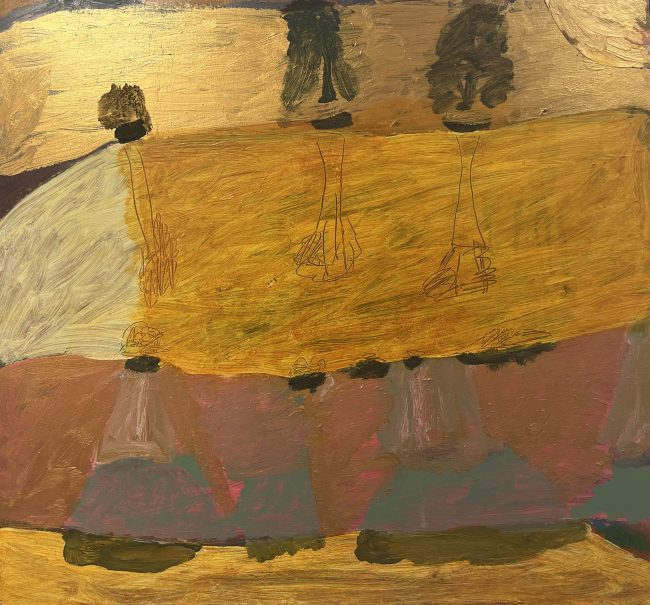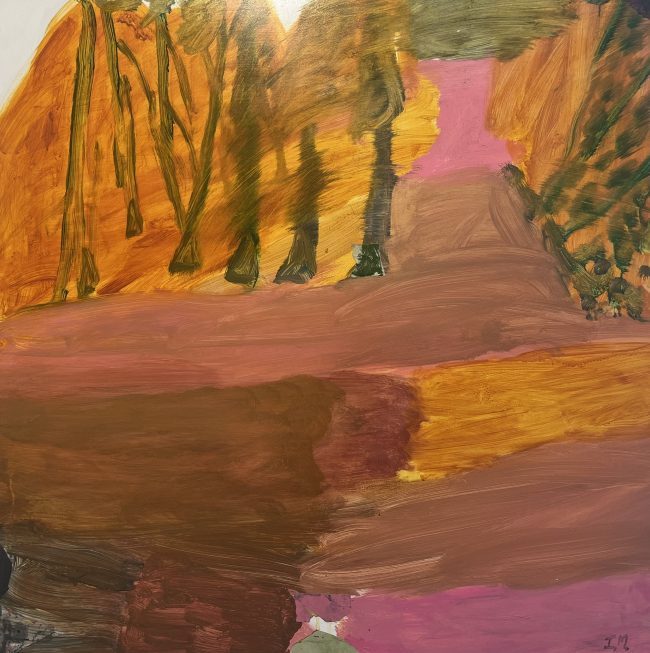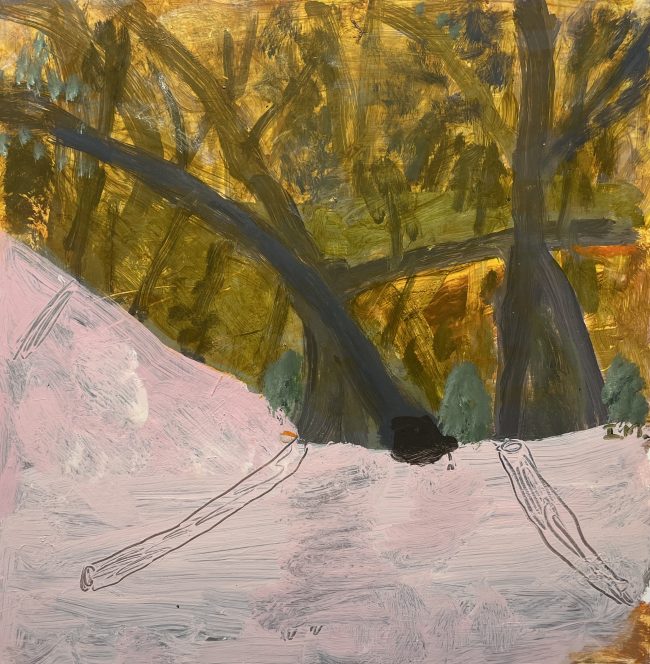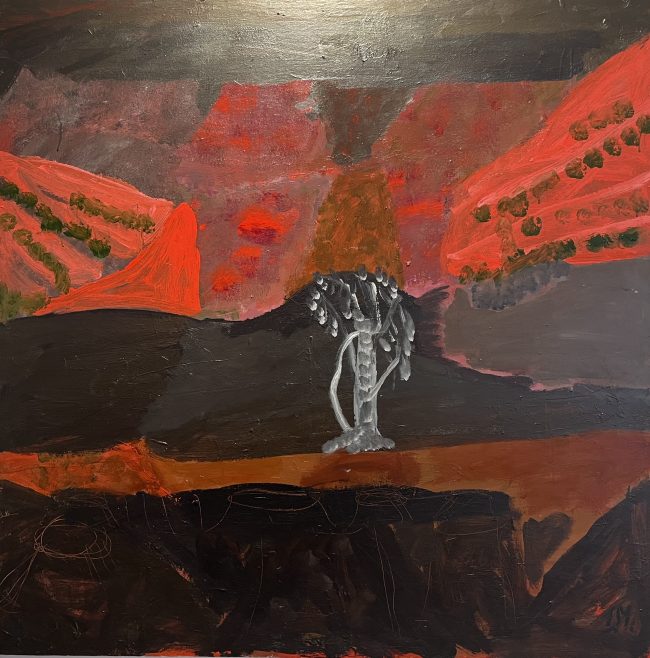King Street Gallery on William
Exhibition and sale
26 August – 20 September 2025
Review by Anthony Frater (Arts Wednesday)

It always a long awaited treat when a new collection of paintings from Idris Murphy come to market.
Idris Murphy was born in Sydney in 1949 and graduated from Sydney’s National Art School in 1971. Following his return from further study and work abroad in 1979, Idris was keen to continue the Australian Landscape painting tradition. He said he wanted to, “come to terms with, to re invent and create symbolic images, metaphors, for a unique land…to evoke the essence of the landscape, accept its realness yet capture its otherness…to encounter not just to observe”.

His work is recognised and collected nationally and internationally and despite the fact that there are solid figurative elements and discernible forms it is reasonably safe to say – not that one likes locking an artist into a genre box – he is an Abstract Expressionist painter. His work is well served by a deliberately contrived even fortuitous terra-morphism in that his interpretation of perspective, form and reality are deeply altered and shifted so that what is manifested becomes a metaphor or symbol for what would otherwise seem obvious even banal.
He camps out, works at an easel en plein air, often finishing his works in the studio and indeed to see his paintings one is compelled to rush out at once to where he paints: a land called Mutawintji in far western New South Wales, or Gondwana Land, Fowlers Gap, East McDonald Ranges, Ruby Gap, Hale River or Ross River and in the words of Robert Louis Stevenson, “feel the needs and hitches of our life more nearly, to come down off the featherbed of civilisation and find the globe granite underfoot and strewn with cutting flints“.

He uses a range of brush sizes, even sticks, with which he liberally applies broad flat expressive washes of somewhat primal, unexpected combinations of acrylic colour such as, “acidic reds and greens, pushed up against purple-pink and a dark, murky blue”. There is a rough instinctive and introspective spontaneity and fluidity to his painterly style. He uses a mixed media: collage (strips of paper or tree bark), pencil, charcoal, and acrylic paints – we almost hope to find grains of desert sand. From time to time he also applies small areas of thick highly textured paint that act as a foil or purposeful slave to pictorial balance and harmony. At times one can even see the canvas, or paper, board or aluminium, or whatever his chosen surface is.
His work is not just observed in the here and now but also draws on memory in an attempt to capture the shifting of time and place. One of the ways he achieves this is to overlay form – trees, hills, escarpments – with a thin gesso wash and then drag or scrape a broad metal wedge across it so that the remaining form recedes, smudged ghost-like into the background to become a reflective remnant of memory which now, impregnated as it is, conversely infuses and manifests upon the present, floating or hovering, fixed and distorted through an outback gesso haze. It gives his work a timeless enduring permanence that typifies the Australian landscape, shimmering, ancient and unwavering in its determination to prevail waxing and waning into eternity.

Murphy’s work is like an alchemic metaphor in that a profound transformation or metamorphosis occurs between what he observes and what is expressed on the canvas. He has a Cézanne style determination to get to the essence or the crux of his motif, not just the rock or the tree or the mountain or for that matter himself, but the intrinsic symbiotic connectedness of all these things, that elusive essence, a spirit, a higher truth.
He is interested in reintroducing divinity back into painting and though he is emphatically quick to point out that it has little to do with an “overtly religious experience”, he says,“the silence in the outback conveys something to me about God’s intent, but that’s not enough, I am trying to make that palpable again… re-cognised, re-recognised in paintings ”.
Longtime companion, and award winning Australian Expressionist artist, Kevin Connor (1932-2025) said of Murphy, “his work has matured into a line of visual thought of great significance to the art of this country”. Art Critic, Bruce James of the Sydney Morning Herald said, “his paintings have the force of talismans brought back from the site of their creation”. Also from the Herald, John McDonald finds parallels between Murphy’s work and a Romantic Landscape painting in that “like the Romantics, looking at the natural world also becomes a looking within the self, or the search for a relationship with the Creator of both self and world. One could adopt a more formal, secular perspective, but the brooding nature of his imagery suggests a deeper source of motivation”.

One does not need to look to deeply to find that there is a nexus between the work of Idris Murphy and that of the Indigenous Australian artists. It could be seen as spiritual ‘white man’ within his own frame of reference and all that entails, reinterpreting the spirit that has always existed in outback Australia, or, a kind of ‘white mans’ Dreamtime.
Finally, Literary figure Jacques Delaruelle said Murphy, “shows the grounding of thought in perception”, and in doing this, “makes it clear that the spirit hides neither inside nor outside the body, but is very much mingled with things”, and that “the work itself does not purport to describe external appearances on a conventional or an objective basis. It is not mimetic, yet it seeks as if in the dark for a point of contact with an all encompassing presence”.

Talismans they truly are, there is something especially spiritual about spending time with Idris Murphy’s paintings, we can feel the connections without necessarily needing to know more, the exhibition and sale is on now until the 21 September at King Street Gallery on William.
Share "Review: Idris Murphy – Vibrations of the Primal"
Copy









